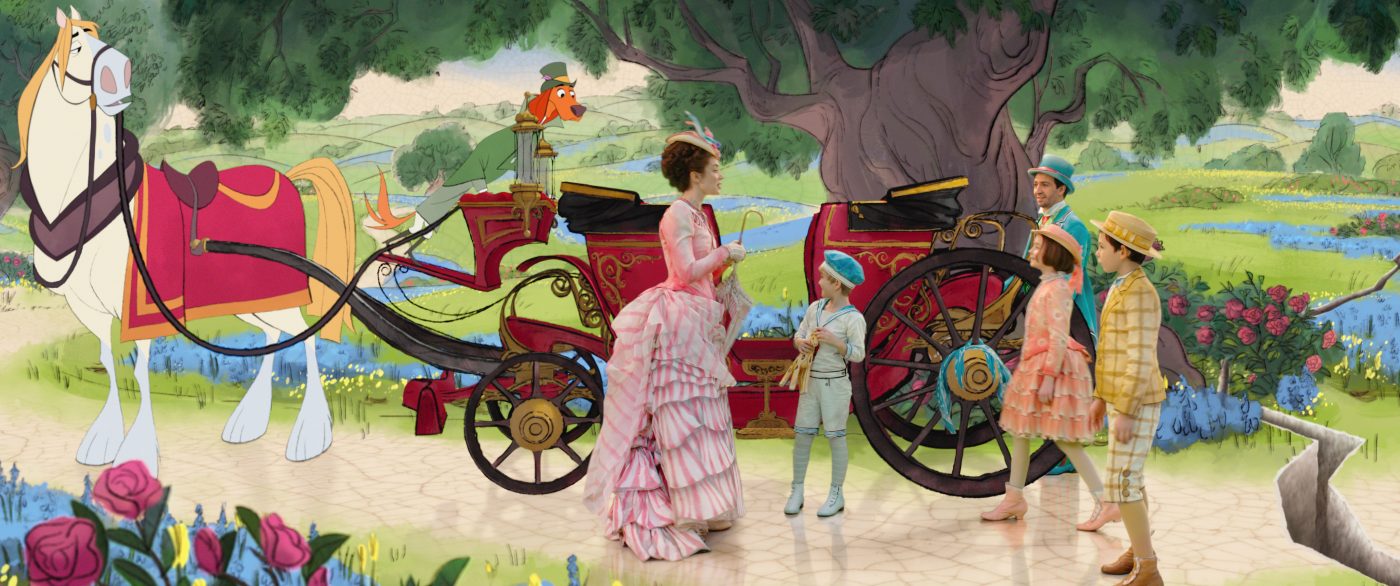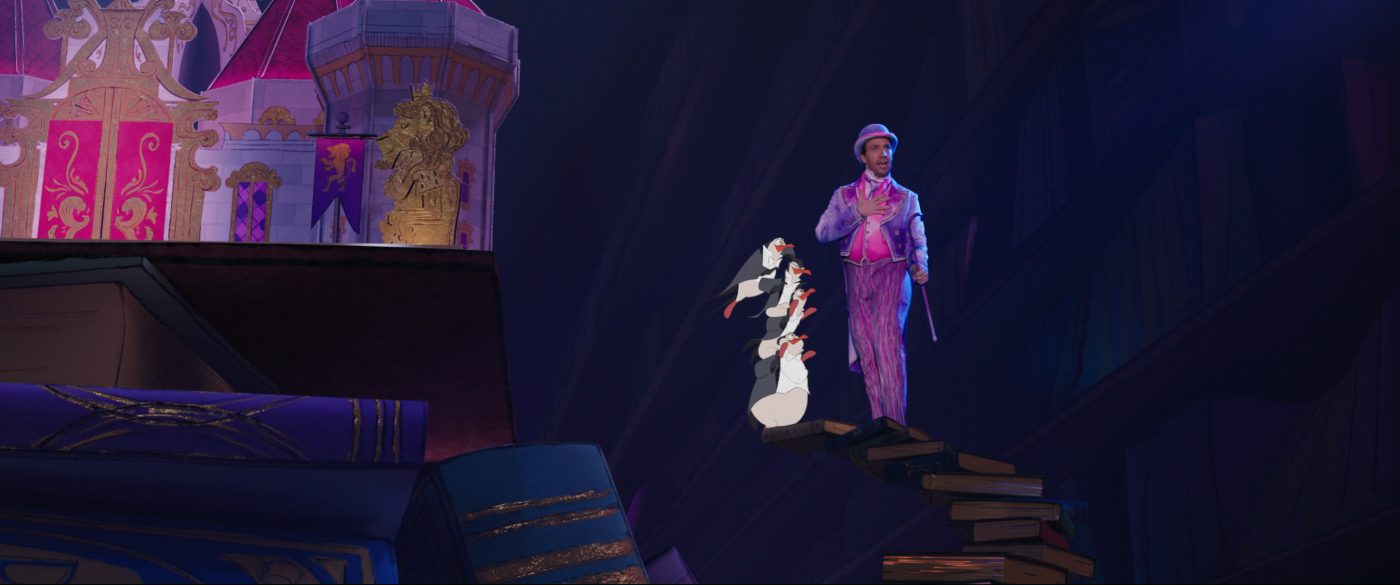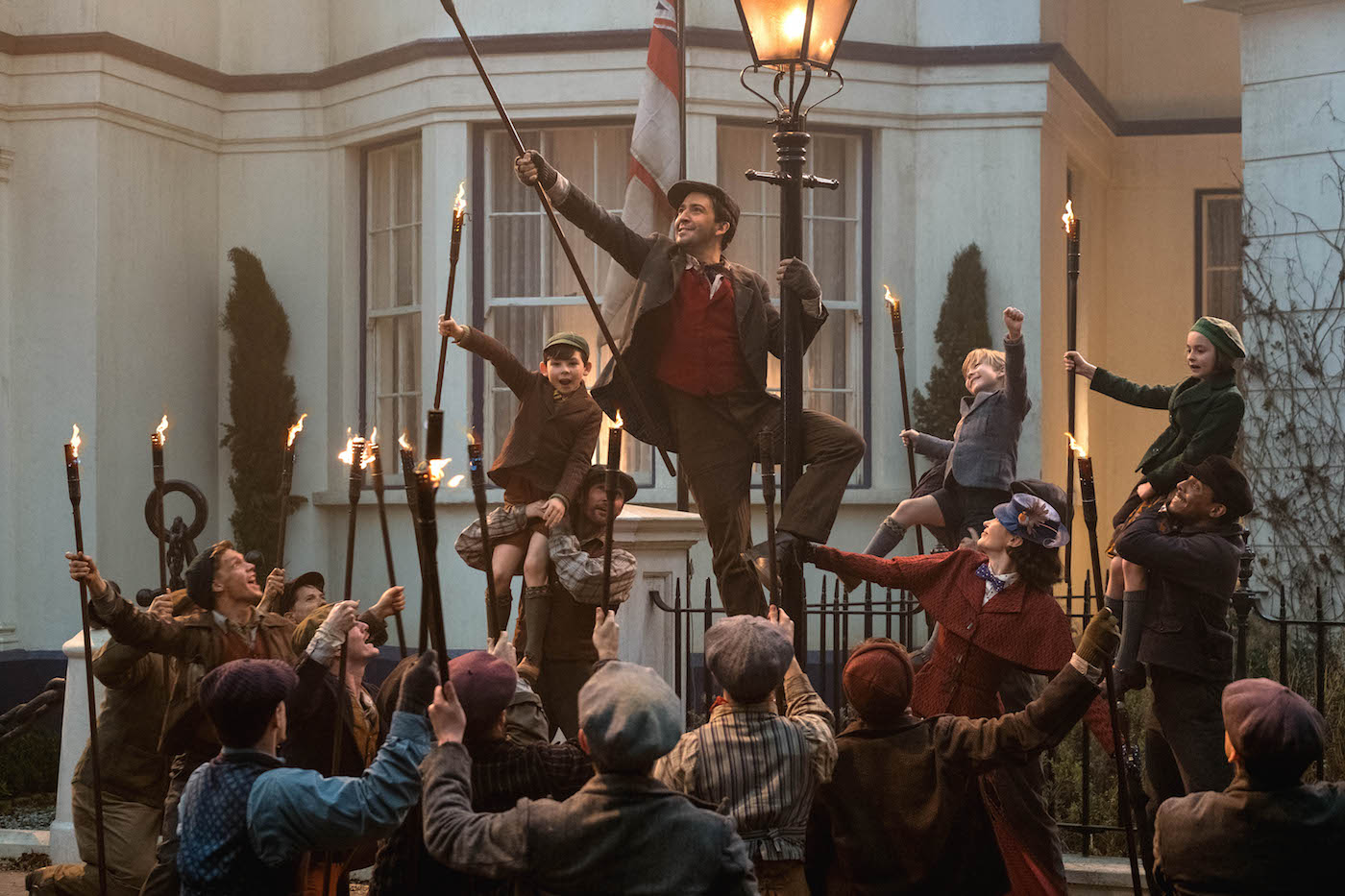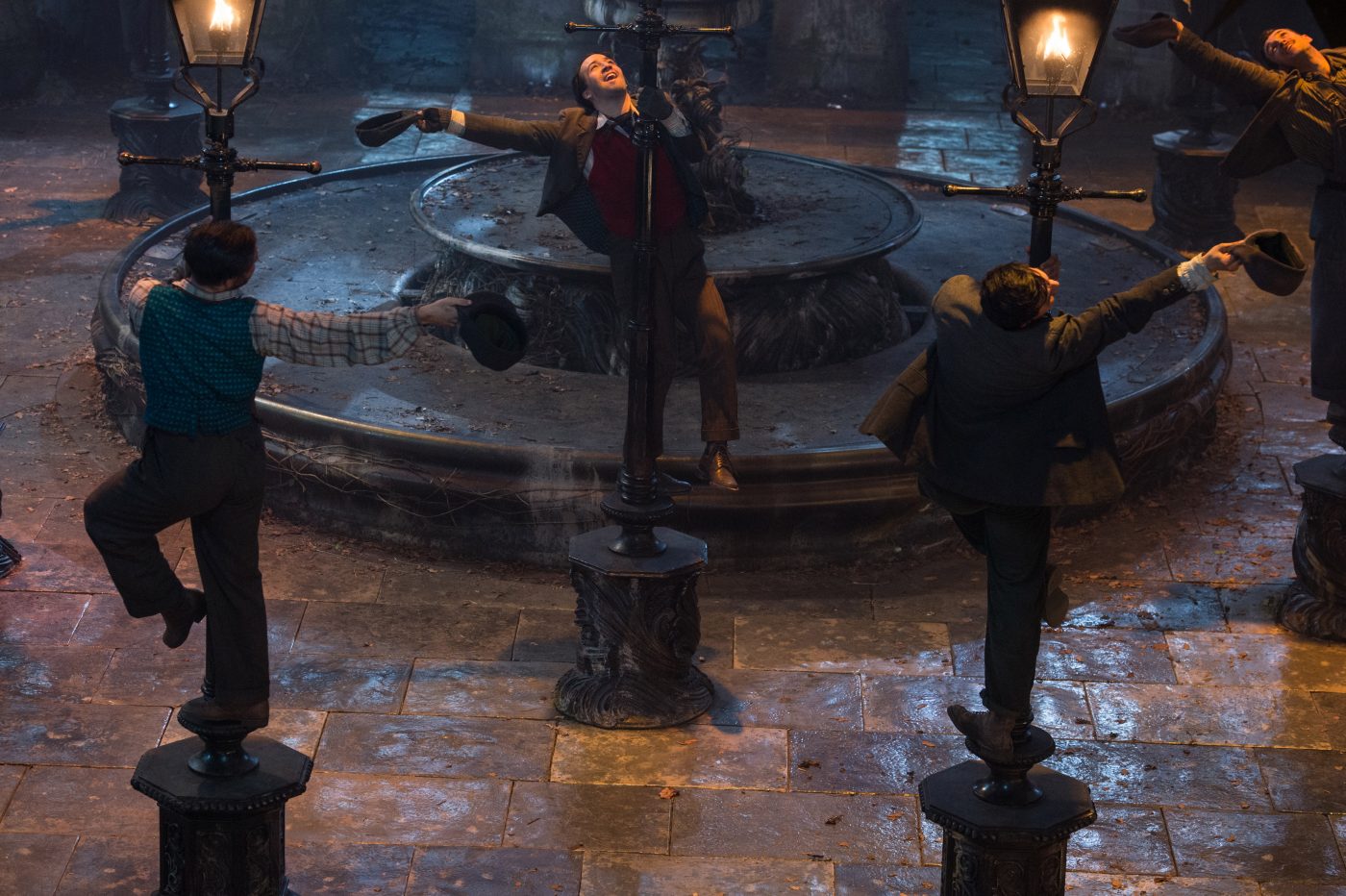Singing Camels & Talking Ceramics: Inside Mary Poppins Returns‘ Sound Design
There is a special type of person who could tell you what it sounds like to dance inside of a ceramic bowl. They could also describe what a singing camel sounds like under a big top circus tent. These people would just as readily know the kind of musical rhythm attributed to a bicyclist dashing through the streets of London. Those who are endowed with this ability are the master sound artists crafting the musical fantasy event of the year. All of this magic and more unfolds under the watchful ear of sound supervisor Renée Tondelli, alongside fellow sound supervisor and sound designer Eugene Gearty, in Mary Poppins Returns.
The process of imagining the sounds of a fanciful world and making them a reality is anything but child’s play. Tondelli and her team spent a year integrating the wonderful and whimsical antics of everyone’s favorite nanny into the long-awaited sequel.
“The most important thing is to get your team together and the people you think will have the right sensibilities for this particular team,” Tondelli said. “Of course, we were also out of our minds excited about working on this film because we all loved it as a child. I started this group together and we stayed on it for a year and worked together in the most collaborative wonderful way of anything I’ve ever worked on.”
Anyone who spent their childhood flying over London by way of umbrella or sailing through a park on a carousel horse knows that everything is brighter when Mary (Emily Blunt) is around. Since leaving the Banks children decades ago, the Great Slump has hit Britain and frivolity is scarce. Tondelli draws this contrast early on in Mary Poppins Returns.
“Our sounds were more black and white [at the beginning of the film],” she described. “There weren’t happy birds and laughing children. It was more industrial and cold. That was how we started the film because at that point, people didn’t have a lot of hope. Once Mary arrives, hope starts to be filtered through certain children and then everybody starts to see their own blessing, which is magic. As that happens, we were able to take the film and go into the lighter and more expansive soundscape. Finally, toward the end, it just blossoms.”
Creating a movie soundscape is a complex art reliant on instinct. There are no canned sounds that can be dropped into a scene to make the action come alive. Tondelli rejects clichés. Her work goes beyond sound effects and manifests as an auditory portal into Mary’s world.
“Mary Poppins to me is magical realism,” she said. “It’s not fantastical. We were very careful not to put ‘whooshes’ and magic sounds in there. [Director] Rob [Marshall] said everything had to be dipped in realism.”

Rather than merely accentuating, the film’s audio is enveloping. After the children break a decorative bowl, Mary takes them on an adventure inside the dish. This new environment was an important consideration. Tondelli imagined what a ceramic world would sound like and applied that to every part of the scene.
“First of all, the bowl has to speak,” she explained. “We have to believe there is actually someone inside that bowl talking to us in this room. In order to achieve that, we experimented with all these different rubber mallets and chips and china bowls and banged on them and recorded them with a microphone. That’s called an impulse response. So you’ll get the reflection off the bowl what it actually sounds like.”
Complicating matters, the scene that takes place inside the bowl is a musical number. The pitches and tones Tondelli and her team produced had to work in literal harmony with the song while still capturing the effect of being inside a ceramic world.
“We took those impulse responses then pitched them to work with the music, so it wasn’t a discordant sound,” she said. “Then we fed all the dialogue through that and made them sound small. When they land, their voices are going through the same process, so it sounds like they’re all inside a ceramic bowl.”
Not only voices but footsteps also had to be filtered through the effect. Again, a blanket sound could not be applied to everyone. Each character had a unique footfall to correspond with their shoe style and gait.
“We worked with this amazing Foley team in Toronto called Footsteps and they ended up walking on marble and then taking a rubber drum mallet and hitting a porcelain bowl for every single step so they had this ring off as they walked. Each child had a different pitch in their footstep and Mary had one. For me, I just love that.”
Foley, or the art of recording sounds to correspond with the scene, is still critical for sound designers. Tondelli said that every single sound they recorded was still done by hand. One of the most famous sound tricks is using coconuts for horse hooves. The technique is now dated and regularly passed over for real horse hooves in films, but Tondelli was surprised to find there was an application for it in Mary Poppins Returns.
“Once the song starts happening, they get into the carriage and the horse starts taking off and he’s kind of dancing along with the music, which is really fun and charming,” Tondelli said. “He starts providing this rhythmic beat to the song. [Sound designer] Eugene Gearty said, ‘Gee maybe we should use coconuts.’ The coconuts were perfect because it created this light, delicate, crisp sound that became the rhythm of this song.”
One of the most famous aspects of the original 1964 Mary Poppins is echoed in the sequel. The fusion of animation and live action is a hallmark of the films. Tondelli and her team began working on the sequence long before the animators had even finished their work. The cornerstone scene takes place in a large music hall and bursts with energy.
“When they arrive at the Royal Doulton Bowl, [Mary] spins her umbrella and it becomes a big tent,” Tondelli described. “They walk inside this giant music hall. In London, they were known to be very bawdy and fun with whistling and laughter. When we got the original sequence, it was just on a green screen with Jack [Lin-Manuel Miranda] and the kids. It became populated with hundreds of hand-drawn animals. All of a sudden we had hippos and camels and giraffes and they were all dressed up in their dandy outfits and they all had to have voices.”

The sound team was in charge of giving those characters a voice. Not only were they animated animals, but they were also performers. Each of them had to sing in the style of their species.
“I thought a lot about this,” Tondelli said. “You don’t want them to be too cartoony, but you need them to be British and sound like an animal and they are actually singing the chorus to Mary’s song. In order to do that, I went to London and hired about 80 actors who could also sing. A lot of them are on West End and are really talented people. I said, ‘Who can do a camel?’ They would all test it out and say, ‘Oh, he can do the best camel.’ He would come up and he would do his voice and do callouts and be responsive and then also be able to sing like a camel in this chorus. We had chickens and flamingos and bears and they all had this wonderful cacophony that we were able to blend together into this giant music hall so it really sounded larger than life.”
That musical element was the most difficult aspect of Tondelli’s work. Recording the vocal performances in the manner required for the design team to work with is a challenge. Once they have usable sound, making the voices sound as clear as possible is an additional concern.

“They rehearse for several months and then record it and they play that live on the set and the actors sing to it,” Tondelli explained. “It makes the actors very comfortable to be able to sing along, but at the end of every sequence, he kills the pre-record and they do it live. What is really important to all of us is these songs happen organically.”
Mary Poppins Returns features brand new songs by Marc Shaiman and Scott Whitman. Disney already debuted two beautiful pieces from the film. To ensure audiences will love the new music as much as ‘Feed the Birds’ and ‘Supercalifragilisticexpialidocious,’ the lyrics must be clearly understood, and each note given its proper space.
“To do that, we end up really micro-editing. Sometimes even syllables between the pre-record they do in the studio and the production live that they actually sing on the set,” Tondelli said. “There are twelve new songs with all new lyrics. We had to be very careful about protecting those lyrics. It’s very intricate and very detailed, but hopefully, it just feels like a beautiful song.”

One of the most audio intensive new songs of the film is ‘Trip a Little Light Fantastic’ sung by Lin-Manuel Miranda as Jack the Lamplighter. The scene features more than 50 dancers and 20 actors on bikes. None of the sounds from the set were usable and had to be recorded separately.
“You have the back dancers doing things with their hands and knees and dancers in the foreground jumping on the lamps,” Tondelli described. “Then you’ve got dancers doing splits and tumbling when bikers come through. That all had to be singularly supported and had to be syncopated. Nobody can be off. The minute you hear something off, your brain just signals. We reproduced all of those dance numbers in every single song.”
Tondelli worked with co-choreographers Joey Pizzi and Tara Hughes, who hired eight dancers and taught them the original dances, to capture their footfalls and other actions. Tondelli worked with the dancers to create the right sound on the right step. C5–a foley stage in New York–had a special floor built just to record the dancers. Rather than splicing together different takes on different flooring, the stage was a tapestry and the actor had to be in the right section at the right time.
“There was the slate floor then I had a leather floor because there is a scene where they are on a stage and the stage is all made out of books. Then they jump down to a stage that is wood and then they jump up to the books which are leather and then one was paper,” Tondelli said. “You had to create all these different surfaces. The dancers would know at that particular step you had to be on leather and on that step you had to be on paper and on that step you had to be back on the stage. We made this sort of mosaic floor and they did it according to what they saw. It was live. It wasn’t something where I just did the leather steps and then the wood steps. I had them do it all at once.”
Tondelli created an astounding soundscape, but the thrill isn’t reserved just for the audience, she said. Being on set was just as dazzling as fans would hope.
“This really was such a magical experience. The crew was just as magical. It was really rare air to work on this film.”
Featured Image: Emily Blunt is Mary Poppins and Lin-Manuel Miranda is Jack in Disney’s MARY POPPINS RETURNS, a sequel to the 1964 MARY POPPINS, which takes audiences on an entirely new adventure with the practically perfect nanny and the Banks family. Courtesy: Walt Disney Studios



